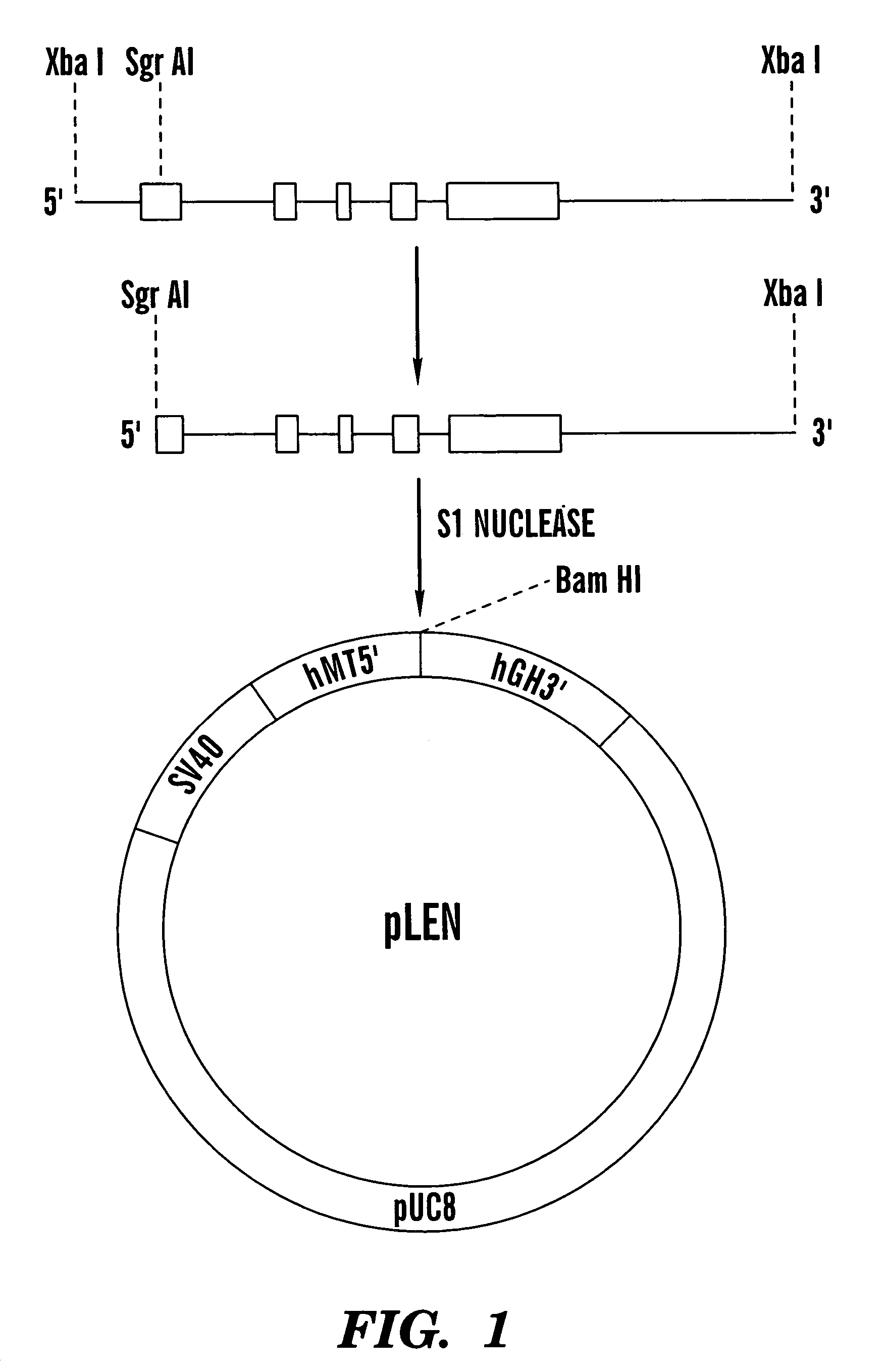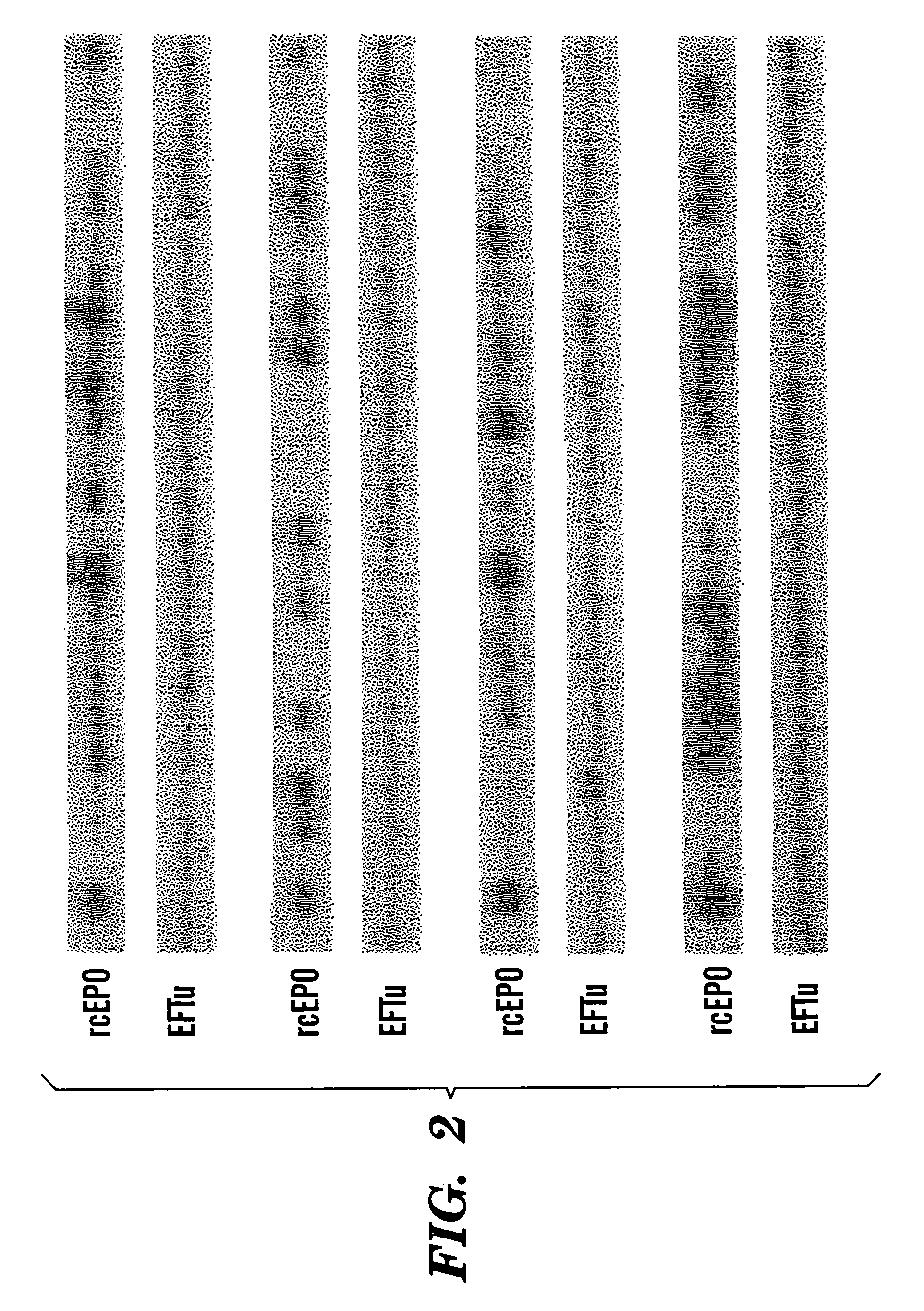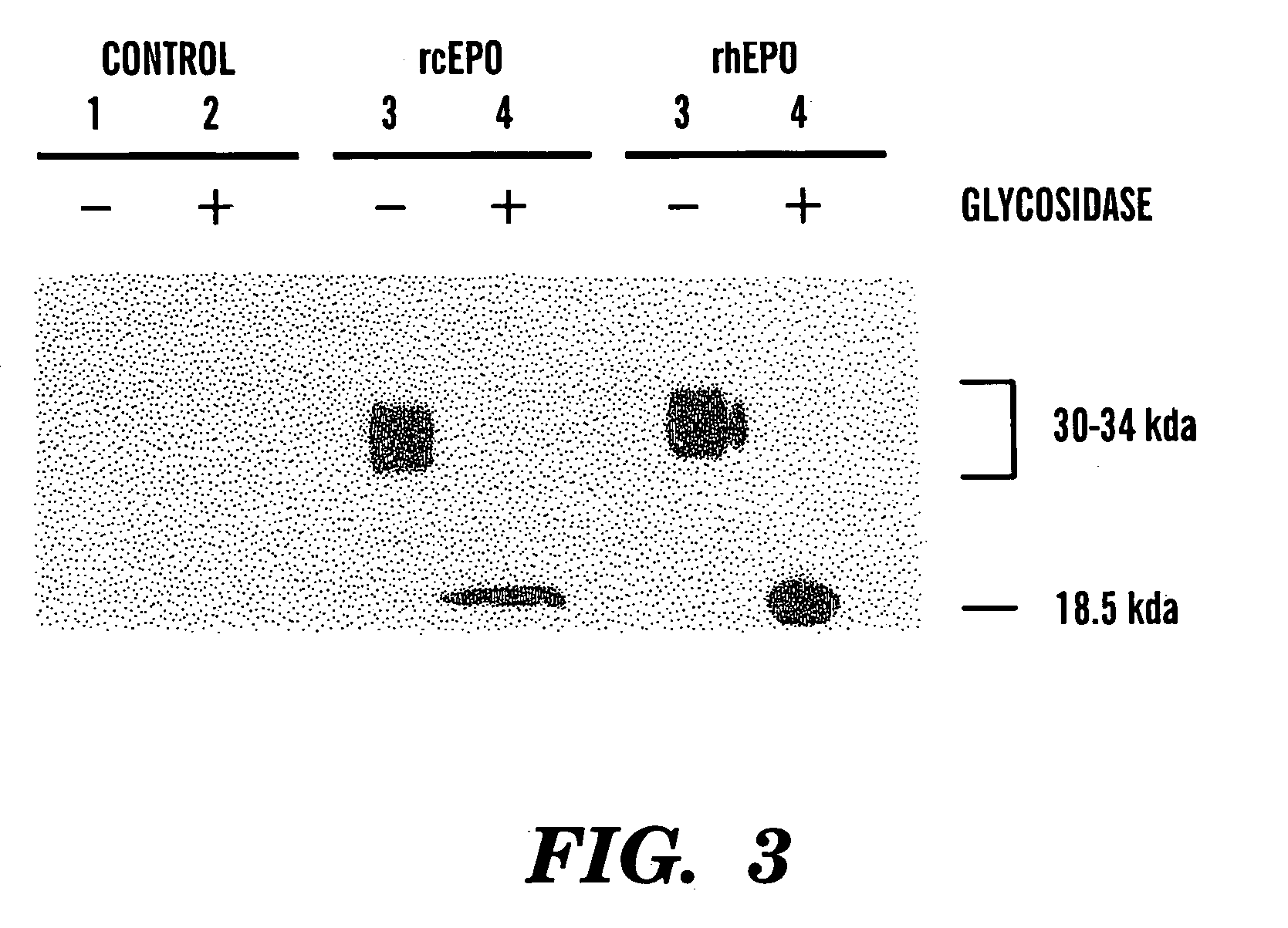Canine erythropoietin gene and recombinant protein
a technology of canine erythropoietin and erythropoietin, which is applied in the direction of peptide/protein ingredients, drug compositions, extracellular fluid disorder, etc., can solve the problems of reduced synthesis of rhepo for clinical use, loss of functional renal tissue, and bone marrow compensatory failure to replace red blood cells, etc., to achieve the effect of stimulating erythropoietis and improving quality of li
- Summary
- Abstract
- Description
- Claims
- Application Information
AI Technical Summary
Benefits of technology
Problems solved by technology
Method used
Image
Examples
example 1
Isolation and Cloning of Canine Erythropoietin (rcEPO)
[0077]The gene encoding canine erythropoietin (cEPO) was isolated from a Lambda DASH genomic library of canine DNA partially digested with Sau3A 1 (Stratagene, La Jolla, Calif.). Approximately one million bacteriophage plaques were screened with a 180 base pair cDNA fragment from exon 4 of cEPO. The cDNA fragment was generated by polymerase chain reaction (PCR) amplification of canine genomic DNA using 5′-GTTGGGCAGCAGGCCTTGGAAGT (sense) (SEQ ID No. 4) and 5′-CTGGGCTCCCAGCGCCCGAA (antisense) (SEQ ID No. 5) as primers. The primers correspond to bases 232–254 and 392–411 of the partial cEPO cDNA available through GenBank accession number L13027 and published by Wen et al., “Erythropoietin Structure-Function Relationships: High Degree of Sequence Homology Among Mammals,”Blood, 82:1507–1516 (1993), which is hereby incorporated by reference) The exon 4 fragment was then subcloned into pGEM-3Zf(+) (Promega, Madison, Wis.), amplified in ...
example 2
Expression of rcEPO and RNA Gel Analyses
[0079]A cell culture system for the production of rcEPO was established by cotransfection of the pLEN-cEPO construct with pRSVneo at a 10:1 molar ratio using calcium phosphate coprecipitation into Chinese Hamster Ovary cells (CHO-KI, American Type Culture Collection, Rockville, Md.). Gorman et al., “High Efficiency DNA Mediated Transformation of Primate Cells, Science, 221:551–553 (1983); Graham et al., “A New Technique for the Assay of Infectivity of Human Adenovirus 5 DNA,”Virology, 52:456–467 (1973), which are hereby incorporated by reference. The cells were maintained at 370° C., 5% CO2 / 95% air in Dulbecco's modified Eagle's medium (Gibco BRL, Grand Island, N.Y., catalog no. 11965) supplemented with 10% (v / v) fetal bovine serum. Following transfection, G418 (400 μg / ml) was added to the culture medium to eliminate nontransformants. A total of 122 transformed CHO cell clones were individually isolated and expanded. Relative expression of cEP...
example 3
Protein Analyses by Immunoblotting
[0080]Conditioned medium (30 μl) from a high cEPO expressing CHO cell clone was resolved by SDS-15% polyacrylamide gel electrophoresis under reducing conditions in parallel with an equal volume of conditioned medium from control CHO cells and t5 units of rhEPO. Laemmli, “Cleavage of Structural Proteins During the Assembly of the Head of the Bacteriophage T4,”Nature, 27:680–685 (1970), which is hereby incorporated by reference. The three samples were analyzed both with and without peptide N-glycosidase F digestion (PNGase F, New England Biolabs, Beverly, Mass.). PNGase F reaction buffers and protocols were supplied by the manufacturer. Following separation, the proteins were transferred by electroblotting at 33 V and 4° C. overnight to a nitrocellulose membrane (Bio-Rad, Hercules, Calif.). The membrane was blocked for 1 hour at room temperature with 5% nonfat milk in 50 mM Tris, 150 mM NaCl buffer (pH 7.4) with 0.05% (v / v) Tween-20 (TBS-T buffer). Af...
PUM
| Property | Measurement | Unit |
|---|---|---|
| molecular weight | aaaaa | aaaaa |
| molecular weight | aaaaa | aaaaa |
| volume | aaaaa | aaaaa |
Abstract
Description
Claims
Application Information
 Login to View More
Login to View More - R&D
- Intellectual Property
- Life Sciences
- Materials
- Tech Scout
- Unparalleled Data Quality
- Higher Quality Content
- 60% Fewer Hallucinations
Browse by: Latest US Patents, China's latest patents, Technical Efficacy Thesaurus, Application Domain, Technology Topic, Popular Technical Reports.
© 2025 PatSnap. All rights reserved.Legal|Privacy policy|Modern Slavery Act Transparency Statement|Sitemap|About US| Contact US: help@patsnap.com



